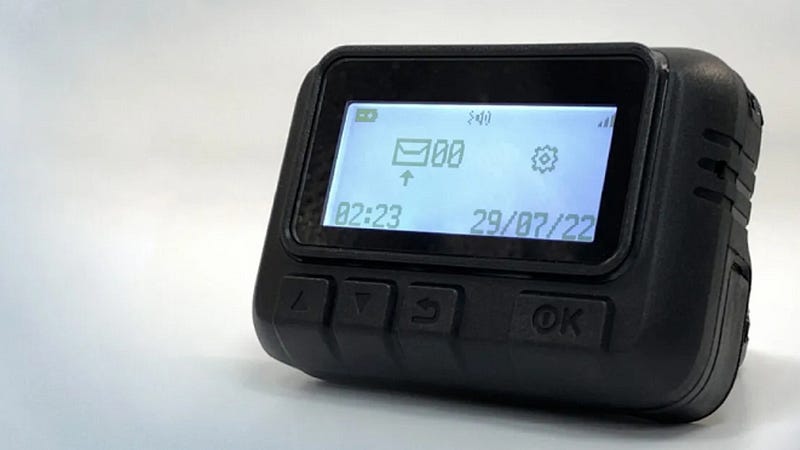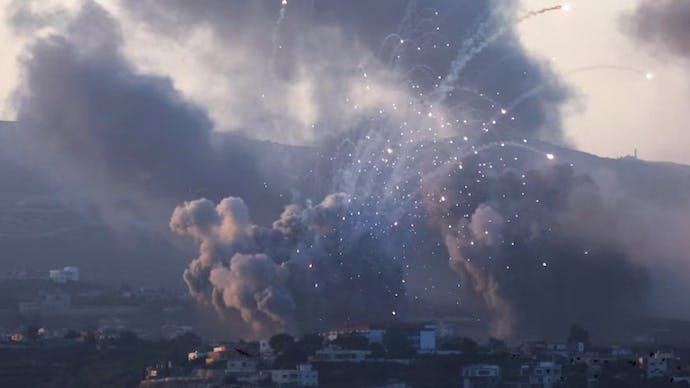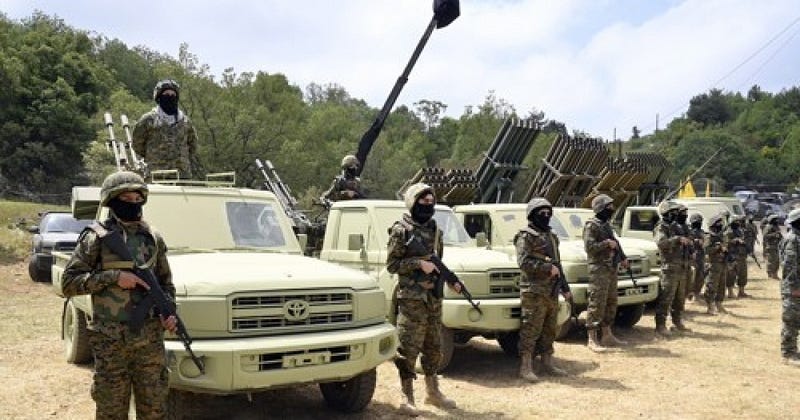Introduction:
On the 17th and 18th of September, 2024, a series of targeted explosions rocked the state of Lebanon. 12 people died, 3000 got injured. Some unspecified actor (possibly Israel) who has not taken responsibility yet, managed to weaponize Pager Devices and walkie talkies that Hezbollah used for communications. They contained small explosives that could fit inside the pagers/walkie-talkies and could be remotely detonated with explosives. The images and videos of the detonations were too gruesome to be included here, but they can be found on the internet easily. One of the videos is here.
Hezbollah — which means “party of God” or “party of Allah” — is an Iran-backed, Shiite Muslim political party and militant group based in Lebanon. It was founded in the 1980s amid the 15-year Lebanese Civil War and has been led by its Secretary-General Hassan Nasrallah since 1992. Today, it controls much of the Shiite-majority areas of Lebanon, including parts of the capital, Beirut.
The Sequence of Events:
In February 2024, Hezbollah placed an order for pagers and walkie talkies, which were delivered by April.
On Monday, September 17, 2024, at 3:30 PM Local Time, many pagers used by Hezbollah received a message and exploded, killing at least 12 people and severely injuring thousands more. Among those injured was Iran’s Ambassador to Lebanon, Mojtaba Amani, who also had one of these pagers. The next day, September 18, an attack with a similar modus operandi was carried out on walkie-talkies used by Hezbollah operatives. This attack also killed 9 people and injured several others. The damage to Hexzbollah was amplified by the fact that funeral for the victims of the previous day’s attacks were being held. Hezbollah operatives had congregated to pay their final respects and were hit by shrapnel from walkie talkies going off, causing further injuries. Hospitals in Beirut were filled with people who were injured in these attacks.

Hezbollah’s Communications Strategy — Why Pagers?
Why was Hezbollah using pagers in the first place?A pager is a wireless telecommunications device that receives and displays alphanumeric or voice messages. One-way pagers can only receive messages, while response pagers and two-way pagers can also acknowledge, reply to, and originate messages using an internal transmitter. The first telephone pager system was patented in 1949 by Alfred J. Gross, technically making it a 75 year old technology. This puts it pretty low down on the technology hierarchy. Each pager has a unique code that needs to be dialed to connect to that specific pager. All connections go to to a switchboard at a central message broadcasting office, where the message is sent out to the correct destination through a network of radio transmission antennas. It is a precursor to cell-phone technology and the internet.
Hezbollah took the decision to procure pagers based on instructions from Hassan Nasrullah, the leader of Hezbollah. He was of the opinion that smartphones could be tracked by Israeli and American Intelligence Agencies. Smartphones can be tracked through GPS and Israel could theoretically identify places with high concentrations of Hezbollah members, allowing them to take out places with air, drone, and missile strikes. Smartphones can also be hacked and remotely taken over through Malware and Spyware like Pegasus. Pagers, being lower on the ladder of technological advancements, can bypass a lot of these vulnerabilities. The point here is, sometimes older technology can bypass the advances of modern technology. It is for the same reason that World War 2 Era Radars can track every single stealth aircraft including the B-2 Spirit Bomber, the F-22 Raptor, and the F-35. It is important to note, this does not mean that the advancements of these aircraft are meaningless. The ability of detecting stealth aircraft is of no use if it cannot be used to guide anti-aircraft weaponry/interceptors to intercept enemy aircraft.
This illustrates the belief that older technology, being much more difficult to track, would also be difficult to weaponize by other actors to cause damage to Hezbollah. He was not wrong in this assumption, but there was an underestimation of the capabilities of the actor who carried out this attack. The simplicity of pagers would provide an additional layer of protection from Israeli surveillance. The September attacks demonstrated that no technology — old or new — is invulnerable. Israel can track the movement of Hezbollah members in and out of hospitals much more easily now.
The Modus Operandi: A Sophisticated Sabotage
The attack on Hezbollah’s communication devices likely required a high level of planning and coordination, involving actors familiar with both Hezbollah’s procurement network and the manufacturing process for pagers and walkie-talkies.
The actor behind this attack probably has intelligence assets in Lebanon, Taiwan, Hungary, and Egypt. Hezbollah did announce their decision to move communications to pager devices a long time ago. Nobody else would really use pager devices for communications, and hence, it would be much easier to identify the supply chains for the production of these devices. There are 2 possible companies involved in the supply:
Gold Apollo, based in Taipei, Taiwan and
BAC Consulting, based in Budapest, Hungary.


The Pager model was designed by Apollo Global, and this put the suspicion on the company initially. However, it made public certain agreements that showed that Apollo had given BAC the rights to use its trademark and produce the pager. The founder of the company did acknowledge some strange money trails linked to the Middle East. The device assembly happened in Budapest. The pagers were first shipped to Egypt, and onwards to Lebanon. The parts for the pagers were sourced from other suppliers. For this attack, the actor would have to identify the exact supply chains and manufacture the batteries. All this would have to be kept under wraps. The sophistication of this operation is mind-boggling. This also means one more thing. The attack has proven that any country’s military communications, especially if the procurement plans are standardized, can be infiltrated like this. An enemy intelligence agency only needs to find out what exact model has been chosen by the military, and then attempt to infiltrate its supply chains, particularly the batteries. And when it comes to smartphones, even other components like System on a chip, Central Processing Unit, and radio modems can be compromised. The pager battery was relatively small. In comparison, batteries of smartphones are much larger and can cause much greater damage. It is for this reason that Samsung Galaxy Note 7s were barred from being taken on commercial aircraft. The batteries were of poor quality, but were fortunately made of only Lithium-ion. There was no explosive in the batteries, or the damage done could have been much greater.
The ability of an actor to identify and infiltrate these supply chains, from the pager assembly in Budapest, to their shipment through Egypt, demonstrates a strong intelligence network, logistical prowess, and a very high level of sophistication. It also raises several doubts on Hezbollah’s procurement processes.
The Fallout: What Does This Mean for Hezbollah and Lebanon?
This attack has led to three crucial outcomes for Hezbollah.
The most important thing that has happened here is the damage to Hezbollah’s operational capacity. With 39 dead and over 3000 grievously injured, this poses a huge cost on the number of operatives Hezbollah can deploy in case of conflict. Healthcare is also expensive for those injured, forcing the group to divert a lot of resources.
The destruction of Hezbollah’s communication network: The attacks has shown Hezbollah that their communication networks can still be weaponized. Just because they cannot be tracked as easily, does not mean that they are not susceptible to be used against the group.
The attack has put Hezbollah into disarray. The loss of morale is extremely costly to any organization, and especially more so during times of conflict. It might have also sown doubts in the minds of the Iranians, who have been supporting Hezbollah with all types of weapons for a very long time. Estimates of Iran’s support to Hezbollah amount to nearly 700 Million Dollars a year.
This attack also comes in the midst of a number of assassinations of the Top Command of Hezbollah. All of this paints a very poor picture for the group’s operational capabilities.
Israel’s Role: Preparing for a Ground Offensive?
Israel has not officially claimed responsibility for the pager and walkie-talkie attacks, but its subsequent military actions indicate that these explosions could be part of a larger strategy. In the days following the explosions, Israeli airstrikes intensified across Southern Lebanon, a Hezbollah stronghold. On September 23, 2024, Israel’s military reported that it had targeted over 1,600 Hezbollah sites in a single day, surpassing even the scale of its bombing campaign in Gaza following the October 2023 Israel-Hamas conflict.
Hezbollah retaliated by firing over 250 rockets and missiles toward Israeli positions. These exchanges have raised concerns of an impending Israeli ground invasion.

The massive air campaign, combined with Hezbollah’s crippled communication network, could signal Israel’s preparation for a full-scale ground offensive in Southern Lebanon. Such an invasion could mirror Israel’s earlier operations in Gaza, which aimed to weaken Hamas before launching a ground assault.
Impact of the Attack on Lebanon:
While Hezbollah is a militant group from Israel’s point of view, it is also a political party in Lebanon that represents the Shia community in Parliament. Hezbollah members have been elected to the Lebanese Members of Parliament. Hezbollah has never attempted to secede from Lebanon as such, and so the other factions of the Lebanese Parliament, as well as the Lebanese Armed Forces, have no case to attempt to quash the military wing of Hezbollah. Hezbollah and its allies control nearly half of the seats in Lebanon’s parliament, which means they hold significant sway in Lebanon. Even if the Sunni and the Maronite Christian Groups of Lebanon want to, they cannot take out Hezbollah by virtue of the fact that it is a political party with significant support.In the event of a ground invasion, the Lebanese Armed Forces are obligated to protect Lebanese territory and Lebanese citizens, including the areas that Hezbollah controls. Hezbollah is possibly more powerful than the formal Lebanese Army, due to Iranian investments, and due to the financial crises of Lebanon resulting in limited defense spending. Hezbollah also has access to some heavy weaponry like artillery and drones.

The lack of capabilities means that the Armed Forces will probably not intervene, not until Hezbollah is significantly weakened at least. However, Hezbollah often places its ammunition dumps in civilian areas, using them as human shields, which mean that Lebanon’s Civilian Population will be caught in the crossfire.
Conclusion:
The current situation in Lebanon and Israel is extremely tense. Things could see an uncontrolled escalation into all-out war. Iranian involvement in the immediate aftermath is unlikely, since Iran always takes its own time to retaliate. This is not an immediate concern for the IDF. Hezbollah’s human resources and communication networks have suffered severe damage and a lot of its resources will now have to be diverted to recover from this strike. Israeli Air strikes have rocked Lebanon in the 10 days since. Everything points towards an Israeli Ground Offensive into Southern Lebanon, the same way Israel launched an offensive into Gaza. The sequence of events between Gaza in October 2023 and Lebanon in August 2024 is very similar. Israel also tried to take out as many Hamas operatives as they could to minimize Israeli Military casualties. The sheer number of air strikes in Lebanon mean that either Hezbollah is much stronger than Hamas, or Israel is going into this military campaign much more prepared than Gaza. What happens next will be very interesting to look out for.



